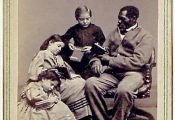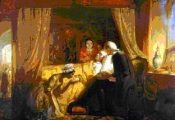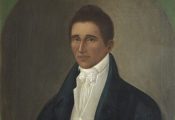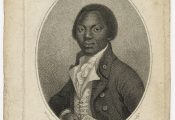The role of the Quakers in abolition
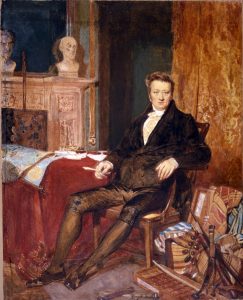 The forced transportation and enslavement of over 11 million Africans to the plantations of the Caribbean and the Americans inspired the first mass human rights campaign in history. It is a great testament to the enduring passion and commitment of African monarchs, enslaved Africans, freed slaves, lawyers and millions of ordinary men and women, who fought, campaigned and lobbied for the end of the slave trade, that the tools they employed are still used in achieving contemporary campaign goals.
The forced transportation and enslavement of over 11 million Africans to the plantations of the Caribbean and the Americans inspired the first mass human rights campaign in history. It is a great testament to the enduring passion and commitment of African monarchs, enslaved Africans, freed slaves, lawyers and millions of ordinary men and women, who fought, campaigned and lobbied for the end of the slave trade, that the tools they employed are still used in achieving contemporary campaign goals.
The Quakers and the birth of the anti-slavery movement
Historians commonly depict the birth of the anti-slavery movement as beginning with the key figure of Thomas Clarkson and his winning of the Cambridge essay prize, which led him to begin his lifelong campaign against the slave trade and slavery. Clarkson’s essay, however, was greatly inspired by an American Quaker, Anthony Benezet, and his book Some Historical Account of Guinea … with an Inquiry into the Rise and Progress of the Slave Trade. Benezet was one of many Quakers who believed that the slave trade and slavery contradicted the teachings of Christ.
According to historical records, the Quakers – formally known as the Society of Friends – were the first British supporters of the anti-slavery cause. In 1688, in Germantown, Pennsylvania, in their first public protest, Quakers expressed the view: ‘Now tho’ they are Black, we cannot conceive there is more liberty to have them slaves, as it is to have White ones.’ The first officially minuted record against the slave trade again involved Pennsylvanian Quakers. The minutes of their annual meeting urged Quaker merchants to ‘write abroad to their correspondents that they send no more Negroes to be disposed of’.
While the 1680s had seen the immigration of British Quakers to Pennsylvania, they still looked to the London Yearly Meeting for advice as the parent organisation. However, as they were able to see the horrors of slavery first hand, the Americans took the step of sending information to London and urging decisive action against the slave trade. Thirty-one years later, in 1727, the London Yearly Meeting officially expressed disapproval of the slave trade, noting:
It is the sense of this meeting that the importing of Negroes from native country and relations by Friends [i.e. Quakers] is not a commendable nor allowed practice and is therefore censured by this meeting.
Further Quaker condemnations followed, including the 1761 decision to disown any Quaker not complying with the rule on non-ownership of enslaved Africans.
The anti-slavery movement’s slow evolution can be illustrated by the 65-year delay between the first Pennsylvanian Quakers denouncing the slave trade and the British Quakers reaching a decision to excommunicate Friends owning slaves. It would take a further 22 years for them to develop a campaign strategy that would later form the cornerstone of those employed by abolitionists.
In 1783, Quakers became aware that a Bill relating to the slave trade was being debated in the House of Commons, and on 17 June, they presented the first anti-slave trade petition to Parliament, signed by 273 Quakers. Three days later, the Meeting for Sufferings, the executive committee of the Yearly Meeting, set up a 23-member committee with a view to obtaining and publishing information on the slave trade. Britain’s first anti-slavery organisation had been born. This organisation’s goal were to inform the public about the slave trade and develop techniques such as sending anti-slavery articles to newspapers and lobbying MPs. In just one year (1783–4), they distributed 12,000 copies of a public address to MPs and members of the royal family.
Expanding the movement
Having been inspired by the work of Benezet and the Quakers in raising awareness of the horrors of the slave trade, Clarkson quite serendipitously joined forces with the latter to expand the anti-slavery movement to most corners of Britain.
After winning the essay competition, he was introduced to leading figures in the movement. Admiration between Clarkson and the Quakers was evidently mutual, and Quaker lawyer Richard Phillips was especially moved by Clarkson’s determination. Phillips knew the workings of government and many of the politicians that the abolitionists would need to persuade, and Clarkson had the necessary academic background. This combination of talents led the two men to decide to work together researching the workings of the slave trade.
Their partnership resulted, in May 1787, in the formation of the Committee for Effecting the Abolition of the Slave Trade. Anglicans Clarkson, Philip Samson and lawyer Granville Sharp joined forces with nine Quakers including Richard Phillips to create the committee. Sharp is an important figure who has not been given his historical due. He was instrumental in the legal actions calling for the emancipation of African servants , as they were often called, in Britain and took the case of the Zong ship murders before Lord Chief Justice George Mansfield.
Clarkson and Phillips recognised the need for a parliamentary supporter of the cause, particularly as Religious restrictions enshrined in the oath taken in parliament effectively barred individuals of certain faiths (eg Roman Catholics, Jews and Quakers) from entering Parliament for many years. Enter William Wilberforce, 26-year-old MP for Hull. Wilberforce had considered advancing the cause of reducing vice in Britain or championing the anti-slavery one. After consultation with Prime Minister William Pitt the Younger, he decided to take up the abolition of the slave trade and, following his introduction to Clarkson, agreed to be the movement’s parliamentary figurehead.
With Phillips’ help, Clarkson obtained access to custom house records and statistics detailing the number of seamen involved in slavery voyages. This was the beginning of his now-legendary investigative tour of Britain, gathering evidence from ship captains and sailors who had voyaged to Africa to transport enslaved Africans to the Caribbean plantations. With such evidence, he was able to construct both the moral and the economic arguments for the ending of the slave trade. If he was unable to appeal to his audience’s sense of a shared humanity about the horrors suffered by the enslaved Africans, he could at least highlight the hidden costs to Britain, such as the fatalities among British sailors who contracted dysentery among other diseases on their voyages.
Galvanising the masses
Armed with his research, Clarkson again toured the country, presenting the case for abolition to the public. He displayed the shackles that Africans were forced to wear on the march to the forts and on board the ships. He described the journeys of British sailors and their deaths from dysentery. He implored people to support the abolitionist campaign by forming local anti-slavery groups that would raise awareness in their areas, raise funds to support the work of the movement and sign petitions to be presented to Parliament.
The first petition was received from the local group in Bridgwater in Somerset, and Clarkson travelled to meet the members and learn from their experience. Petitions proved to be popular with the general public, and despite women being unable to participate in petition signing (because they were not allowed to vote), a petition from Manchester calling for the regulation of the slave trade contained 10,639 signatures – more than a fifth of the city’s population.
Campaign tools
The campaign adopted tools and strategies that would be familiar to any activist, campaigner or member of the general public today. The abolition campaign adopted an identifiable logo: the Wedgwood-designed ‘Am I not a man and a brother?’ medallion. This was placed on items as different as snuff boxes, china, women’s purses, hairpins and jewelry and proved to be an inclusive badge that people of different classes and men as well as women could purchase to show their support for the movement.
The use of strong imagery was instrumental in garnering support for the campaign as well as raising awareness of the conditions faced by enslaved Africans. Perhaps none is more iconic than the ‘Brookes print’ designed by the Quaker, James Phillips – a diagram that depicted the horrendous conditions that 454 enslaved Africans endured aboard the slave ship Brookes. Clarkson included a print of it in his tract Cries of Africa to the inhabitants of Europe, and by 1789, 900 copies had been distributed and local groups used it to further raise awareness and support for the cause.
Another strategy adopted by local groups was the boycott. Clarkson encouraged abolitionists to boycott sugar grown and refined using slave labour in the plantations. He estimated that, by 1792, at least 400,000 people across Britain refused to eat sugar from the plantations.
The anti-slavery campaign continued vigorously until relative success was achieved in 1807 with the passing of the Abolition of the Slave Trade Act, which prohibited British subjects from participating in the trade in Africans. However, this victory did not detract the Committee from the wider goal of the emancipation of enslaved Africans, which the Act did not address. Wilberforce encouraged the group to lobby for the adoption of measures to improve conditions on the plantations, together with a plan for the gradual emancipation of those enslaved. The Committee evolved and, in 1823, to reflect its new position, changed its name to the the London Society for Mitigating and Gradually Abolishing the State of Slavery Throughout the British Dominions. In 1824, the Society had 230 local groups that took on the campaign, and between 1828 and 1830, Parliament received over 5,000 petitions from them, calling for the gradual abolition of slavery. Meanwhile, younger and more radical members formed the Agency Committee, which called for immediate and unconditional abolition of slavery.
The role of women in the anti-slavery movement
Clarkson and the Committee for Effecting the Abolition of the Slave Trade believed in engaging everyone in the campaign, and with his progressive views towards women (he believed them to be equal to men in intellect and ability), Clarkson particularly encouraged them to take part. Women came to comprise a large proportion of those who called for the immediate (not gradual) abolition of slavery. Although denied leadership of the Committee, their membership and financial contributions were instrumental in funding it. And, importantly, women were prominently involved in the sugar boycotts.
A notable figure was Elizabeth Heyrick, who led the formation of 70 female anti-slavery societies across the UK. Head of the Leicester Ladies Anti-Slavery Group and treasurer for the Birmingham one, she passionately believed that slaves should be freed immediately and in 1824, wrote the pamphlet Immediate not Gradual Abolition. This stance was diametrically opposed to the official position, and Wilberforce – believing that the female constitution did not lend itself to political sensibilities – gave instructions for Committee leaders not to speak at the female societies.
However, Heyrick’s pamphlet was distributed to all the ladies’ societies, which, having deliberated over its contents, called for a national campaign on immediate emancipation to be instituted. In 1830, the Birmingham Ladies Anti-Slavery Society submitted the same resolution to the national conference of the main society – and threatened to withdraw their funding if their demands went unmet. The pragmatic leadership, recognising that the female societies were some of the biggest donors with a large influence over 10% of financial supporters, acquiesced.
This decision buoyed up the movement. The increase in the number of local branches to 1,300 resulted in 5,484 petitions being sent to Parliament between October 1830 and the end of 1831. The passing of the Reform Act, which expanded the electorate, allowed male abolitionists to make their votes count. As a result, at the 1832 election, half of the plantation-owning MPs lost their seats. As a consequence of this, combined with the actions of the enslaved Africans in the Caribbean who continued advocating for their emancipation, the 1833 Abolition of Slavery Act was passed, which legislated for the abolition of slavery throughout the colonies.
The role of women was instrumental at all stages of the anti-slavery movement. However, the impact of their involvement went further. Anne Knight, leader of the Chelmsford Female Anti-Slavery Society, angered at women being denied a speaking role at the 1840 World Anti-Slavery Convention in London, went on to write a pamphlet advocating equal rights for women, which is now considered the first leaflet in favour of women’s suffrage.
International appeals
The internationalism of the anti-slavery movement was present from the outset, with Pennsylvania Quakers informing British counterparts about what they were witnessing. The British campaign, while focused mainly on galvanising British citizens, necessarily drew on evidence from Africa and the Caribbean.
The strategy of the Agency Committee to pay lecturers to tour Britain was important in galvanising public support. First-hand accounts of formerly enslaved people were extremely valuable in this way. Figures such as Mary Prince and Frederick Douglass came to Britain to inform people of the situation of the enslaved in plantations abroad.
Thomas Clarkson also had links with other countries. He travelled to France during the revolution there to try to increase support for the French abolitionist movement. He also lobbied internationally on behalf of an independent Haiti, which was faced with the difficult challenge of trying to rebuild its economy after being hit by a trade embargo for daring to rid itself of slavery.
The 1840 World Anti-Slavery Convention attracted anti-slavery supporters from around the globe, including two female delegates from the United States: Elizabeth Cady Stanton and Lucretia Mott. As a result of being refused permission to speak there, like Anne Knight, they vowed to hold a conference on women’s rights on their return home. In 1849, the American Women’s Rights Convention was held in New York.
Another example of the international appeal of the anti-slavery movement is the founding of Freetown, the capital of Sierra Leone in West Africa. After consistent lobbying by Granville Sharp and Thomas Clarkson, in 1787 Freetown became home to free enslaved people from London, Jamaica and Nova Scotia. It was the abolitionists’ aim to prove that Africans were capable of governing themselves and were therefore deserving of emancipation.
The enduring legacy of the movement’s internationalism has been the adoption of its campaign tools in international human rights and civil liberty campaigns right up to modern times.
After the emancipation of Africans in British Caribbean colonies, the anti-slavery society went on to fight against human rights violations in Belgian Congo and for the ending of the East African slave trade and the Mui Tsai sytem in Hong Kong and Singapore. Unfortunately, and undoubtedly to the disgust of Clarkson, Heyrick, Equiano and the countless others who dedicated their lives to fight for the abolition of slavery, their work still continues. The Anti-Slavery Society changed its name to Anti-Slavery International in 1991, and works to eradicate all forms of contemporary slavery, which affect at least 12.3 million people across the world today.
